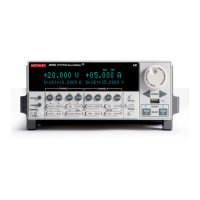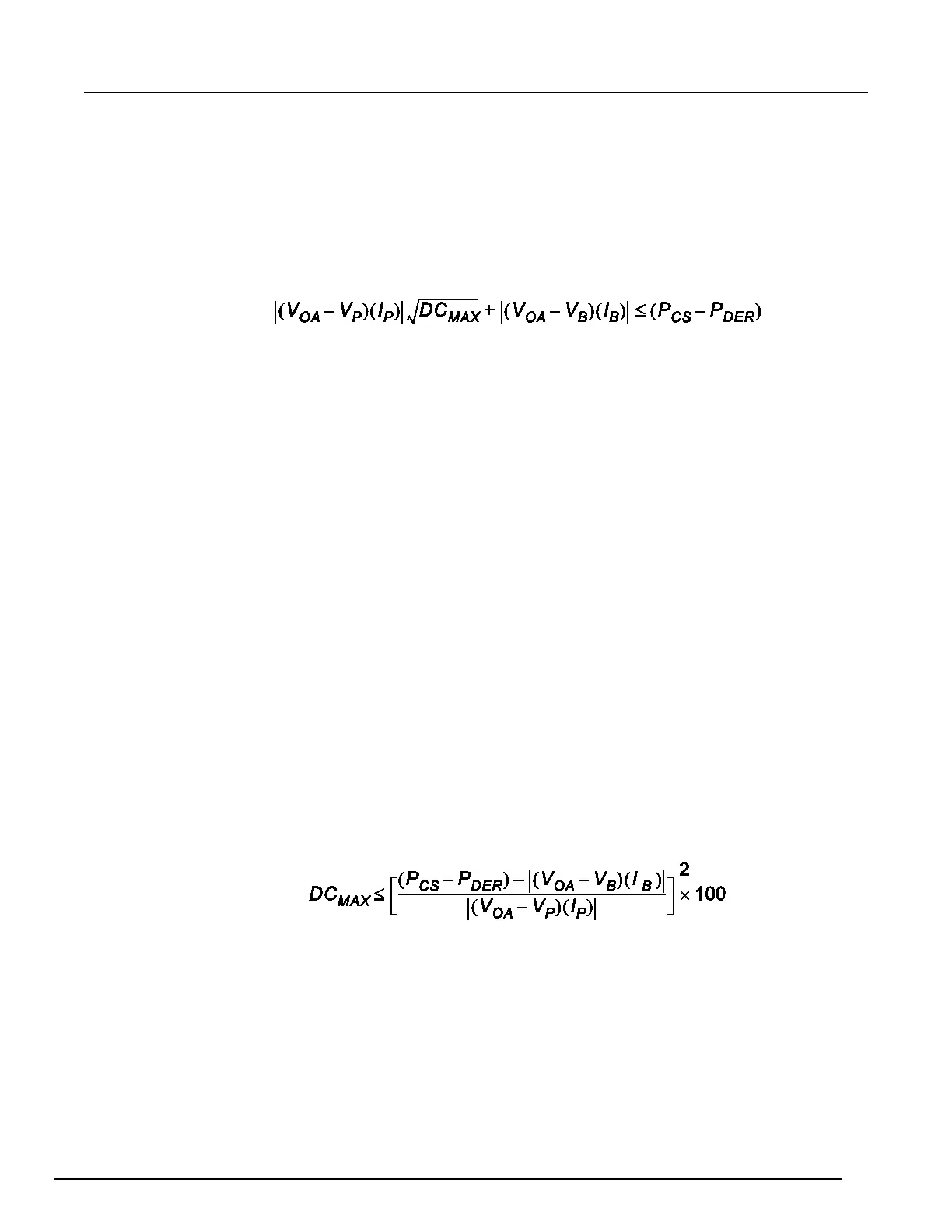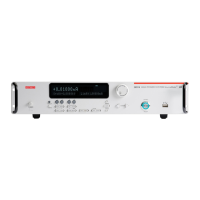System SourceMeter® Instrument Reference Manual Section 4:
2600BS-901-01 Rev. B / May 2013 4-3
However, if any one of these is false, the instrument may overheat if operated in a manner that
exceeds the calculated maximum duty cycle, DC
MAX
.
The maximum duty cycle equation is derived from the power equation below by solving for
DC
MAX
.
The general power equation describes how much power an instrument channel can source and sink
before the total power cannot be fully dissipated by the instrument's cooling system. This equation
incorporates all of the factors that can influence the power dissipated by the instrument.
General power equation
P
CS
The maximum power generated in an instrument channel that can be properly dissipated by the
instrument cooling system measured in watts. For the Series 2600B, this constant equals 56.
T
AMB
The ambient temperature of the instrument operating environment.
P
DER
= T
AMB
- 30
This factor represents the number of watts the instrument is derated when operating in environments
above 30 °C. The maximum output power of each instrument channel is reduced by 1 W per degree C
above 30 °C.
P
is 0 when the ambient temperature is below 30 °C.
V
The instrument output amplifier voltage. This constant can be found in the tables below.
V
P
The voltage level the instrument is attempting to force while at the pulse level.
When operating in quadrants 1 or 3 (sourcing power), the sign of this voltage must be positive when
used in the power equations.
When operating in quadrants 2 or 4 (sinking power), the sign of this voltage must be negative when
used in the power equations.
V
B
The voltage level the instrument is attempting to force while at the bias level.
When operating in quadrants 1 or 3 (sourcing power), the sign of this voltage must be positive when
used in the power equations.
When operating in quadrants 2 or 4 (sinking power), the sign of this voltage must be negative when
used in the power equations.
The current flowing through the instrument channel while at the pulse level.
I
The current flowing through the instrument channel while at the bias level.
Maximum duty cycle equation
The following equation applies to both channels, sinking or sourcing power simultaneously. If a duty
cycle less than 100% is required to avoid overheating, the maximum on-time must be less than 10
seconds.

